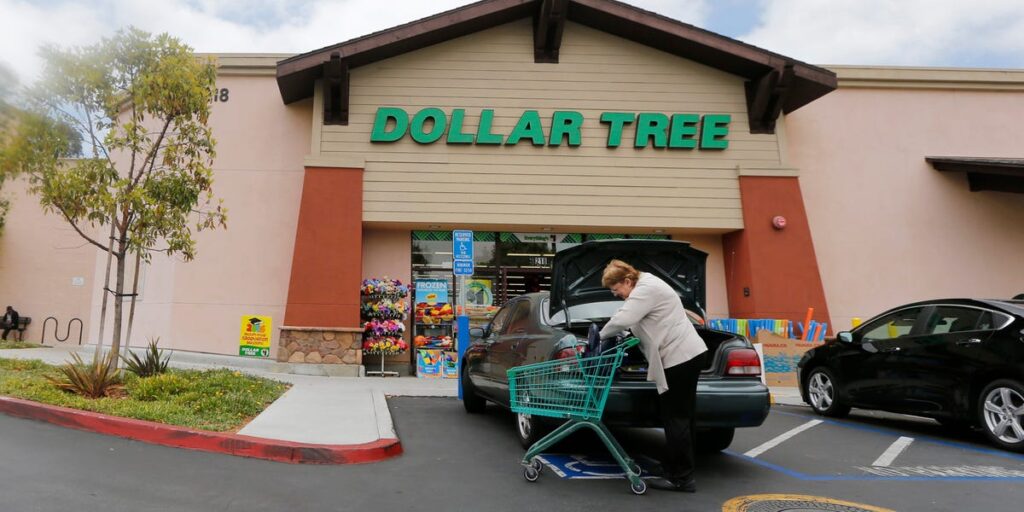Dollar Tree is seeing benefits from branching out into products that cost over $1.25 each.
The dollar store chain has spent the last couple of years adding items that cost more than its standard $1.25 price point. Dollar Tree has added items that cost $3 and $5 each, for instance, and experimented with items that cost as much as $7.
The strategy is paying off, executives said on Dollar Tree’s latest earnings call on Wednesday, especially when it comes to serving new customers at its stores.
“Expanding our assortment to include items at a variety of price points is fast becoming the standard Dollar Tree model,” CEO Michael Creedon said on the call.
He said the chain’s wider range of prices lets it sell larger packs of some consumable goods and higher-quality items.
That wider range of products particularly appeals to shoppers from households with incomes of at least $100,000 annually. Such customers drove a “meaningful portion” of Dollar Tree’s second-quarter sales growth, Creedon said. Dollar Tree largely beat analysts’ expectations for the period, including with 6.5% growth in same-store net sales.
More affluent customers are coming to Dollar Tree stores for the “thrill of the hunt,” Creedon said.
“You come into Dollar Tree, you’re not exactly sure what you needed, and by the end of the first aisle, there’s a basket there because you got more than you thought you would,” the CEO said. “That’s the Dollar Tree magic.”
One example comes from Dollar Tree’s hardware department. Dollar Tree used to offer hammers for $1.25 each, but they sold poorly, CFO Stewart Glendinning said on Wednesday’s call.
Then, Dollar Tree started selling a more expensive version of the tool. “We’ve got $5 hammers now,” he said. “We can’t keep those in stock.”
Those kinds of items are “creating more interest for consumers in a way that is very positive to the shopping experience and also to our revenue line,” Glendinning said.
The chain still has lots of items for the lower-income consumers who have traditionally formed its shopper base, Creedon said. For instance, shoppers have been buying $5 backpacks, which can cost more at other stores, as their kids head back to school, he said.
However, dollar stores have benefited over the last few years as more customers — especially high-income consumers — have turned to chains like Dollar General and Dollar Tree to save money.
Last year, Dollar Tree saw many customers turn to its stores to shop around the holidays, CEO Creedon said on Wednesday’s call.
While Dollar Tree hopes to repeat that performance during this year’s holiday season, it’s facing more hurdles than last year. Earlier this year, the chain took a hit from tariffs. It’s still unclear how much duties on imports from some countries, especially China, will be in the long-run, Creedon said.
Then, there’s the lingering effect of inflation on Dollar Tree shoppers’ budgets.
“If you look over the last four or five years, prices have increased significantly across the entire retail landscape,” Creedon said. “Things cost more for families.”
“As a result of that, we’re cautious” about the future, he said.
Do you have a story to share about Dollar Tree or another major retailer? Contact this reporter at abitter@businessinsider.com.
Read the full article here


